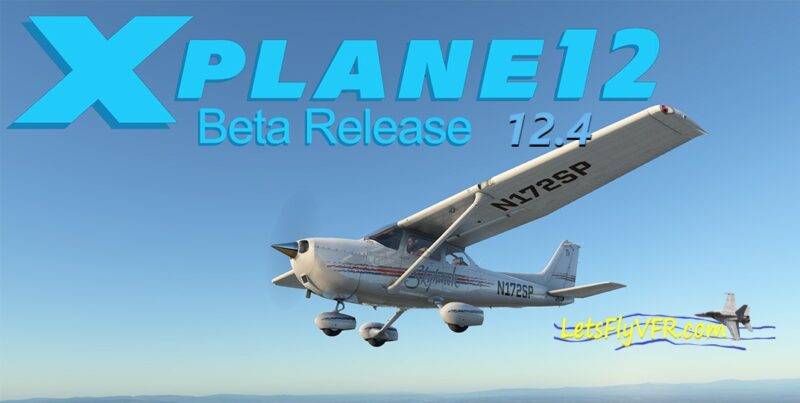MSFS 2020 Graphics Settings Ultimate VR Performance Guide.
14 Recommendations For MSFS 2020 Simulator Bliss
MSFS 2020 graphics settings can be a real VR performance challenge. If your struggling to get a smooth VR (virtual reality) experience, then the research I have done here will restore the smile to your face. What I have found is a real game changer.
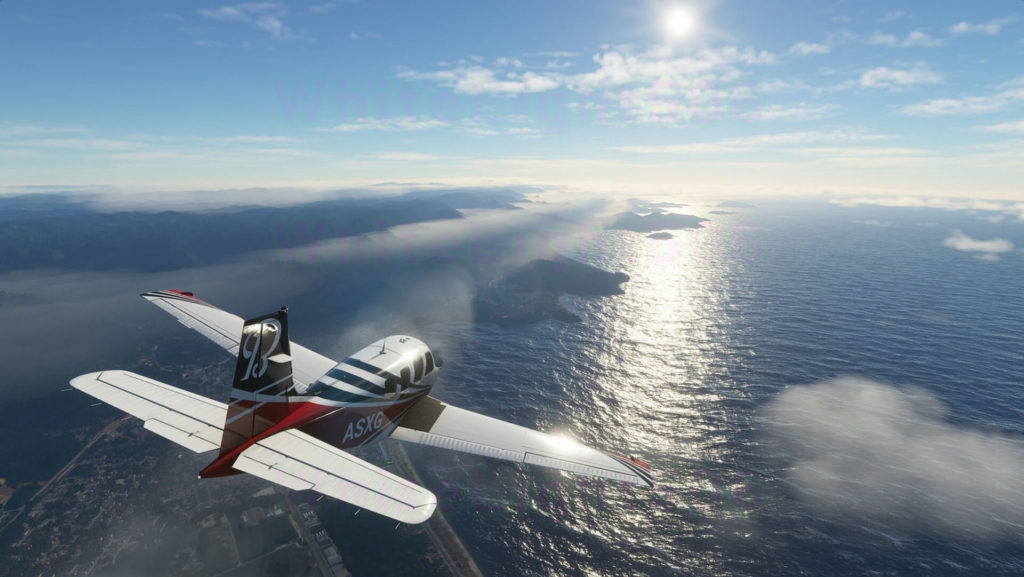
RTX 2060 System Performance.
Its already possible to get good performance on a monitor in 2D with plenty of fps with a Nvidia RTX 2060. It’s also no problem to get around 60 fps in 2D in pretty high settings. You’re going to be around 35 – 45 fps on Ultra. The big issue has been getting a smooth VR experience with good frame rates and clarity with MSFS 2020 graphics settings alone.
In researching lots of YouTube videos and posts I have come up with the graphics settings that have taken my own experience to the next level. Smooth frame rates and excellent quality even at fps from 28-40 fps. The settings I have settled on offer incredible VR clarity on the Oculus Rift S as well as smooth FPS performance. Let’s not waste any more valuable time and get into the settings. These are the MSFS 2020 graphics settings plus Windows 10 settings you need to achieve the butter smooth experience you dream of.
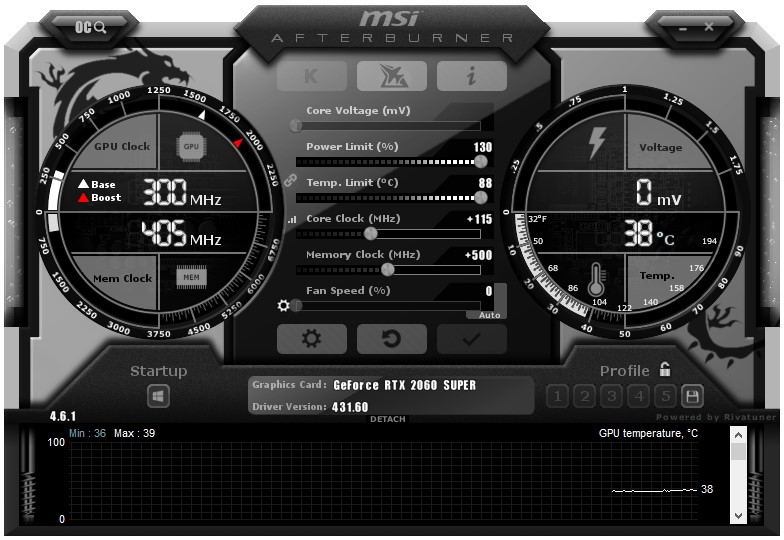
- Joystick / HOTAS – AMAZON.com
- Rudder Pedals – AMAZON.com
- Throttle Quadrant – AMAZON.com
- Gaming Chair – AMAZON.com
- VR Headset – AMAZON.com
The System to Compare.
- AMD Ryzen 5600X – Stock
- NVIDIA RTX 2060 Super 8Gb -Stock
- 32gb DDR 3000MHZ
- SAMSUNG SSD
- ASUS B450 Motherboard
- OCULUS Rift S HMD
Overclocking.
The elephant in the room at this point is the question, “Why don’t you overclock your CPU & GPU? The honest answer is that in my many years of PC building I have never seen more than a couple fps improvement at best and zero at worst. When you then have to then spend the $100 or more for premium cooling solutions, the extra 2-4 extra fps hardly makes it worthwhile. Honestly you would never see the difference in 2-4 or so fps. If you do, please let me know what you have achieved, and how many extra fps in Microsoft Flight Simulator 2020 you achieved. I would be happy to eat my words.
MSFS 2020 Graphics Settings.
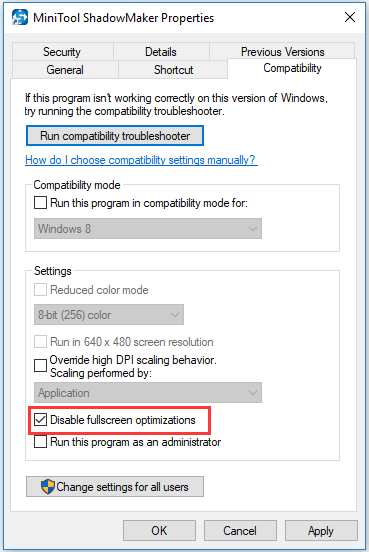
The MSFS 2020 graphics settings you need to achieve the results are quick and easy so first I will list the components then show you the settings.
- MSFS 2020 .EXE – No Full Screen Optimization
- Windows – Game Mode
- Windows – HAGS
- Nvidia Control Panel Settings
- NIS/DLSS/FSR
- Install OpenXR
- Install OpenXR Toolkit
- OpenXR & Your Headset
- MSFS 2020 Graphics Settings
- OpenXR Toolkit in Game Settings.
- OpenXR Toolkit Foveated Rendering
- Rear Projection/Time warp
- The Results:
- Your Results?
MSFS 2020.EXE – No Full Screen Optimization.
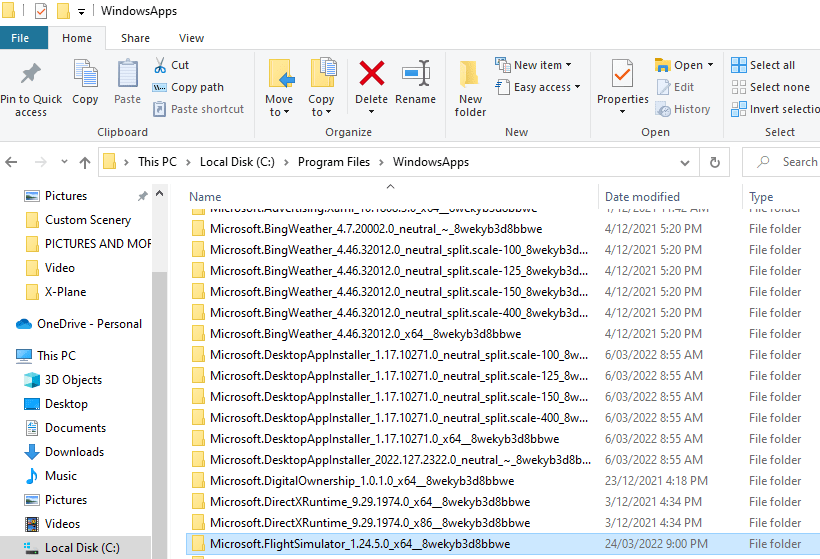
MSFS 2020 .EXE – Turn off Full Screen Optimization. This one has been validated by a few techs and is widely accepted as a good step to performance.
Open your file Explorer and select:
C Drive (Windows Install) – Programs Folder – Windows Apps – Microsoft Flight Simulator – msfs2020.exe and right click and select properties. Look for the Disable Full Screen Optimizations box and tick the box and apply. This is known to cause a lot of stuttering in games.
Turn off Full Screen Optimization – Recommended
Windows – Game Mode
Windows Game mode is a hotly contentious issue and is argued about incessantly by so called tech experts. I touch on it because it because it is always part of their recommendations. It’s a true waste of your time as many tests have shown that either on or off really makes pretty much no difference to performance at all. Margin of error in one or two fps either way. I have it off but not for any real performance benefit that I can attest to. Its totally personal preference so its up to you what you choose.
- GAME BAR – OFF – Recommended

Windows -HAGS
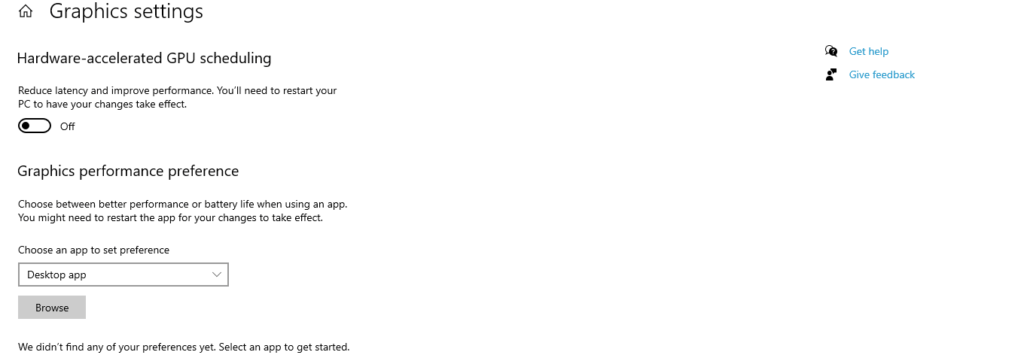
Windows HAGS is another graphics-based setting which is also always included by YouTubers in performance videos. There are a lot of tech channels that have tested it both on or off and found no appreciable FPS difference. I have seen no benefit either way. Your choice at this point.
2. HAGS – TURN OFF – Recommended
NO PERFORMANCE BENIFIT ON / OFF
Nvidia Control Panel Settings
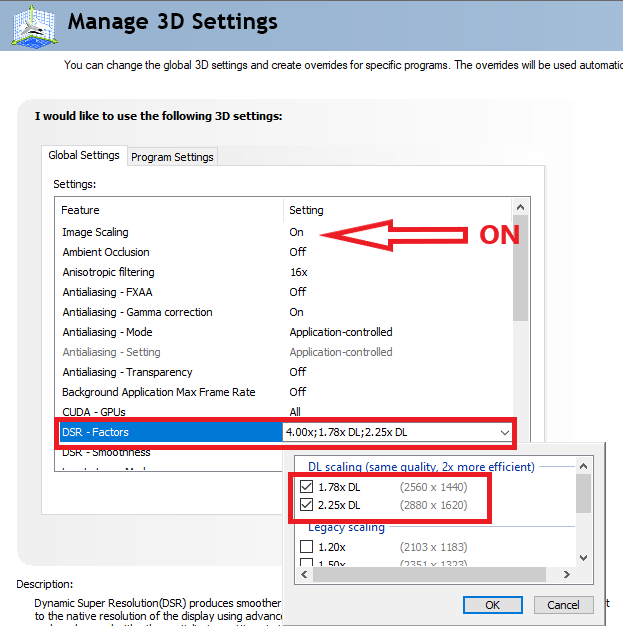
Nvidia control panel settings are the biggest point of contention with so many YouTubers. They profess amazing performance improvements every time. It’s just rubbish and there are YouTube channels that are founded on these videos. Every few weeks a new incredible optimization video. Some claim 35 to 200 plus fps improvements. Don’t watch them! The things that you need like NIS/DLDSR I’ll discuss in a moment. These do work!
DONT BE FOOLED ANYMORE.
They settings changes in Nvidia Control panel make little to no difference to performance. (Honest answer.)
3. Anisotropic Filtering: ON X16 – Recommended. This helped my clarity.
NIS/DLSS/FSR
There is a real benefit though using the newest features called NIS/DLDSR and AMDs FSR features. These give us some real benefits for performance but with a caveat. They don’t currently work in VR as yet but. We have an answer so here is where the OpenXR application and OpenXR Toolkit that will assist us enormously with FPS performance.
4. NIS/DLDSR/FSR ON – Recommended
What are DLDSR and NIS.
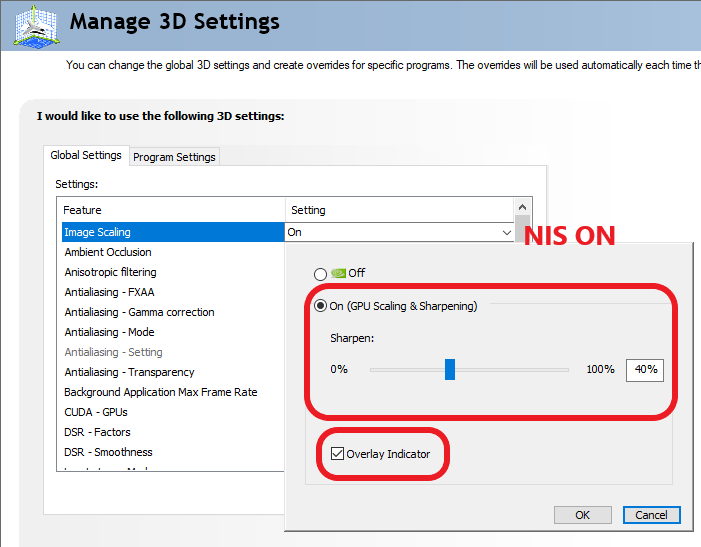
Deep Learning Dynamic Super Resolution (DLDSR) is NVidia’s answer programs needing more performance and visual fidelity. It uses the AI tensor cores to learn and make the world a sweeter and smoother place on screen. NIS is also a version of this upscaling technology. It’s more like a very smart antialiasing algorithm than does amazing work clearing up the quality and bringing performance benefits.
DLDSR/NIS both take your native resolution, down scale it and then use very smart algorithms to improve quality. The use of a lower resolution means the GPU doesn’t have to work so hard so delivers better FPS.
This will help your 2D experience in many games. The issue we have is as mentioned, it doesn’t work in VR natively. Yes it’s a problem but again we do have an answer, it’s the OpenXR Toolkit.
5. Recommend: Turn NIS/DLDSRFSR On in your Nvidia control panel and select the notification box. You need to select the available resolutions from the DLDSR in the Windows graphics settings.
AMD users enable your FSR which is similar to the DLDSR. We will have the choice of both in the toolkit when it’s time.
7. Turn NIS/DLDSRFSR On – Recommended
OpenXR Install
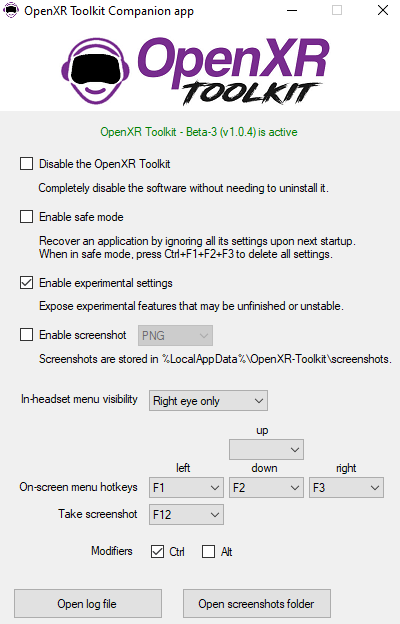
The OpenXR utility is now widely recommended for all VR Headsets as the main driver. OpenXR is accepted to have better performance for nearly all VR headsets compared to their native drivers. The OpenXR platform has been created by the Cronos Group (ie: Facebook) as open-source code and has been recognised as superior to all manufacturer drivers. It has been adopted by pretty much all VR headsets currently on the market. This is a vote of confidence for sure.
Install OpenXR: From the Windows Store. It’s free and one important part of what you will soon experience. One click install.

8. OpenXR Install – Recommended
OpenXR & Your Headset
You will need to activate the OpenXR in your own VR driver software if you’re not already using it by default. The Oculus driver has a selection in the settings to change to OpenXR but also needs Beta features enabled. Once done you can forget about it. It will work automatically for you.
OpenXR Toolkit
OpenXR toolkit is another important part of this performance package. This open-source freeware tool has been created so you can use the upscaling technology NIS/FSR options from both Nvidia and AMD respectfully. These can give you the smooth VR experience and fps boost in performance that is amazing.
9. Install OpenXR Toolkit Here: Recommended
MSFS 2020 Graphics Settings
MSFS 2020 graphics settings are the majority of the secret sauce to get a quality and smooth VR experience.
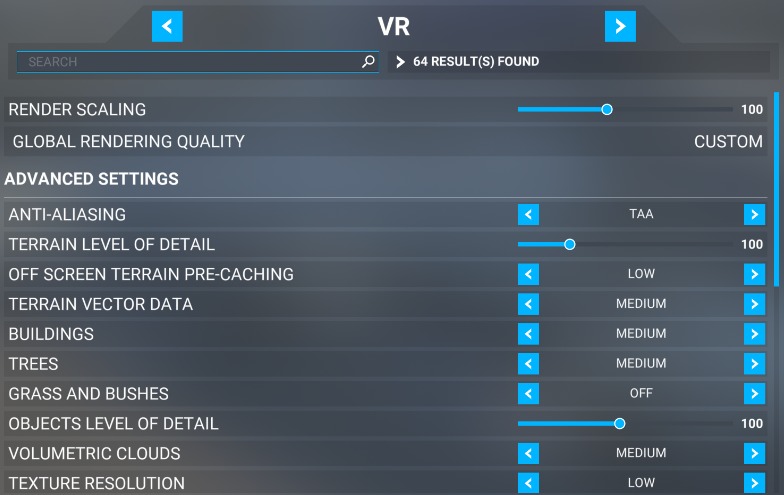
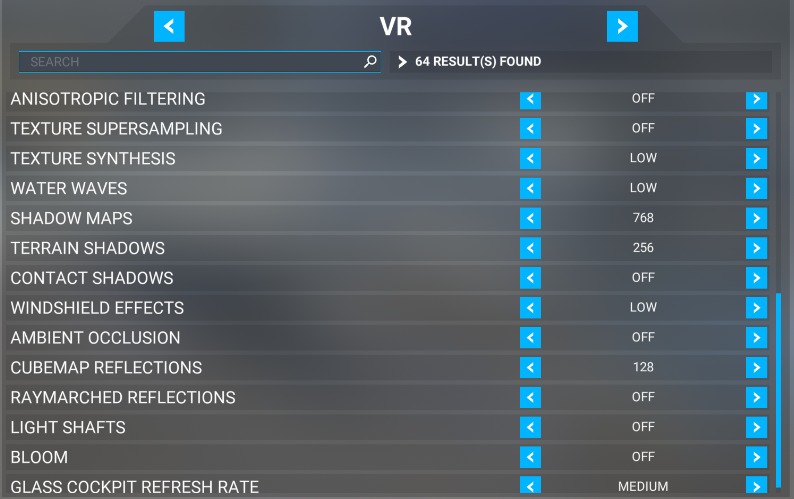
IMPORTANT : ENSURE in game SCALING is Set to 100% so the scaling will work in both 2D and VR modes. It appears the NIS/FSR Do Not Work if you don’t so, please do.
10. All Scaling 100% Recommended
SCALING SET TO 100% 2D & VR Settings
Check out the series of graphics settings to get the best performance with your RTX 2060 OR EQUIVALENT. All systems vary a little so you may need to make small adjustments but if your system is comparable then you should be fine at the end of this.
OpenXR Toolkit
OpenXR toolkit settings are the next very important part of this secret sauce to amazing performance. Check out the settings below for recommended settings. You may still need to tweaking a little but this tool makes it incredibly easy to do. You can select between NIS or FSR regardless of your native graphics card.
Yes you can use FSR even if you have an Nvidia graphics card. The same for AMD owners with NIS. People report better individual performance with either. Check out both.
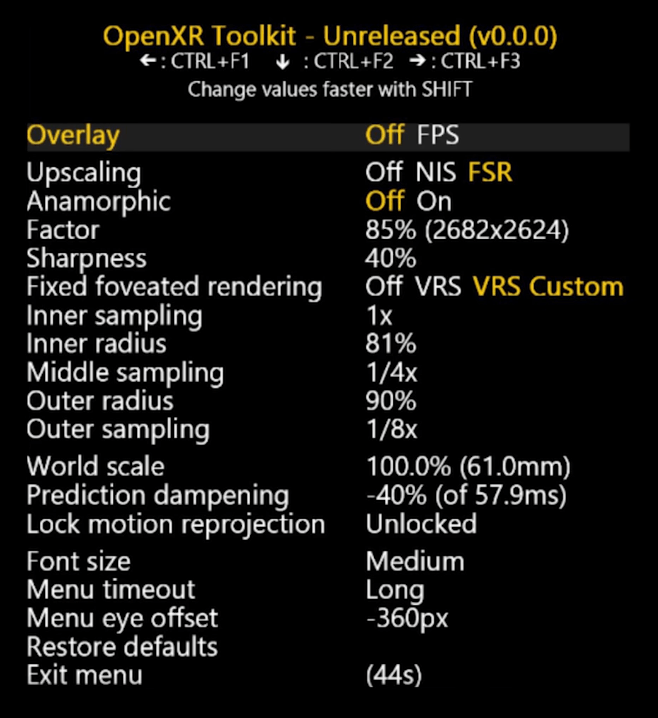
Using the OpenXR Toolkit requires you have your render scale to 100%. To open the Toolkit you need only tap ALT + F2. TF2 key will cycle through the options with F1 stepping the option Left and F3 Stepping the option Right.
The Toolkit can display FPS in VR so turn on the HUD option if you wish. The FPS will display in one eye. When you have made changes some require you Exit and Re Enter VR in game which is simple Shift +TAB and your settings will become visible and up can evaluate the difference.
My settings are in the picture below.
12. The OpenXR Install Recommended
Foveated Rendering OpenXR Toolkit
What is OpenXR Toolkit Foveated Rendering technology and why is a bit spooky. This software within the OpenXR tool adjust the quality your eye sees in your headset. There are active eye tracking systems but this one is passive and cannot track your eye. What it achieves is a higher resolution where your eye is focused and reduces quality and workload outside the centrally focused area.
This improves performance and quality with even a performance boost.
13. Foveated Rendering Recommended.
Rear Projection/Timewarp
Asynchronous Time Warp and Rear Projection are both the same technology where when experiencing frame drops and lag the system is able to insert extra frames to smooth out the whole in game experience. This technology has its place but for the most part Sim pilots leave it off. It can induce air sickness for many and although I have used it It’s not recommended my most flying MSFS 2020.
14. Asynchronous Time Warp/ Rear Projection NOT Recommended currently.
The Results – FPS
The results in FPS and smoothness should now be finished and your MSFS 2020 graphics settings should be delivering a beautiful smooth frame rate in any conditions you choose to fly. My own results from the above MSFS 2020 graphics settings has been a crisp 2D picture and a solid 60 fps. That’s pretty nice if your not flying in VR. In VR I have been getting a smooth 38-40 fps in recent flight with clouds and over London. I feel this is excellent result. Recording the flight below I lost 3 fps using Oculus Mirror at 4k setting and OBS running recording the flight.
Latest CPU’s Available Now – Amazon.com
Get a NEW GPU Best Performance – AMAZON.com
Upgrade RAM Here today – AMAZON.com
Prebuilt PC Options – AMAZON.com
Your Results?
How did these settings help you? Did they help you get the smooth experience I am talking about? I would love to hear from you in the comments. Let me know what your system is and how the guide helped you. If it didn’t that’s OK to let me know and what you did to improve your experience.

Author
Brendon McAliece (Aka Gunnie) is a military veteran with 23 years working on Jet Fighters, their weapons systems and ejection seat/module systems as well as munitions and R&D. Involved with flight simulation since the 1980s, he has flown all the major flight simulators over the years.
He is an Australian expat who has lived in Malaysia, UK, Saudi Arabia and more recently Thailand. He is a multi-lingual blogger who loves to share his life experiences here on LetsFlyVFR.com and DreamingGuitar.com, with his lifestyle and Travel experiences Blog plus his Dreaming Coffee website.
Learn More @
DreamingGuitar.com – DreamingCoffee.com – LetsFlyVFR.com
( HOME – BLOG – SHOP – ABOUT )
As an Amazon affiliate I may benefit from qualifying sales.




